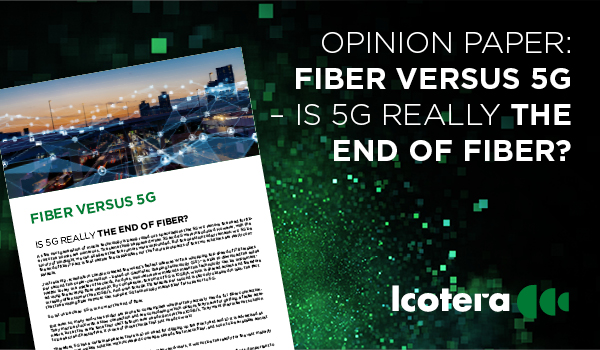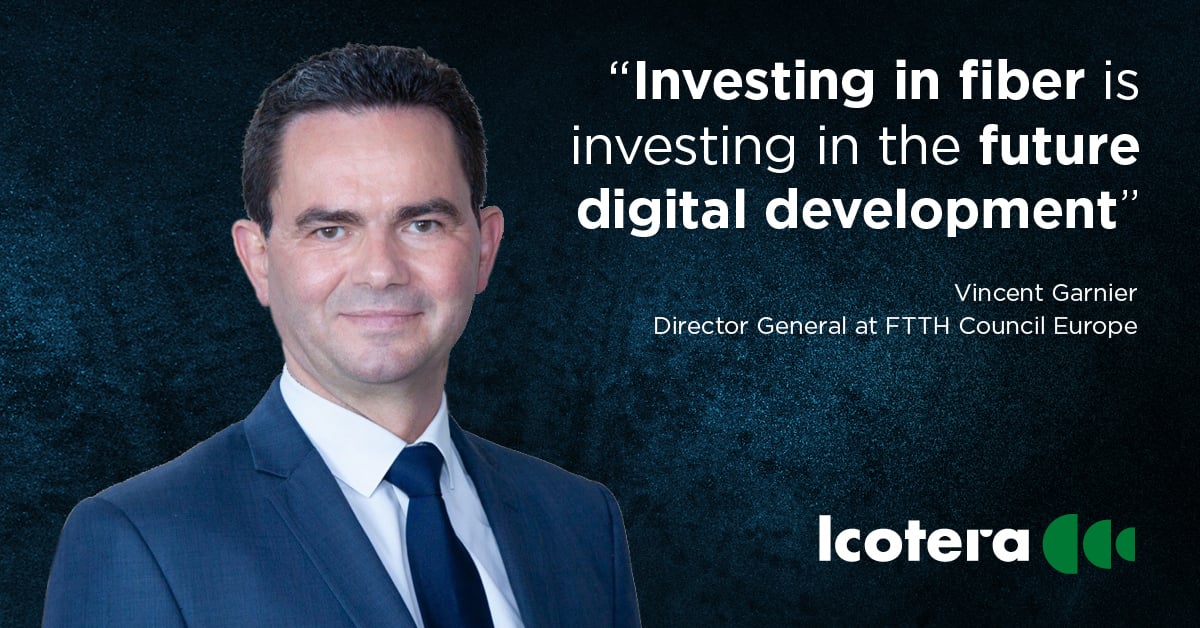Interview with the FTTH Council Europe
The Director General of the FTTH Council Europe, Mr. Vincent Garnier, provides a firsthand insight of the deployment of fiber across the EU as well as how operators and ISPs can address some of the obstacles surrounding the deployment of fiber. Download our opinion paper: Fiber versus 5G - is 5G really the end of fiber? and get the full interview – including four important messages from Mr. Garnier worth noticing.
Extracts from the interview:
Q – We experience that a number of consumers see the question of 5G and fiber as an either/or discussion. How does the FTTH Council Europe view the discussion of fiber vs. 5G?
A – In order to understand the discussion of fiber versus 5G, it is important to understand the complexity of 5G. Whereas the evolution from 3G to 4G was simple, the evolution from 4G to 5G is far more complex, which isn't something that consumers necessarily know or understand in detail. With the switch from 3G to 4G our phones were seamlessly upgraded and as consumers we did not have to actively do anything other than enjoy the faster speed. That is not necessarily the case with 5G.
Q – How do fiber and 5G play into the future of connectivity?
A – With the increased bandwidth and speed of transmission as well as the reduced latency that 5G brings to the table, it opens up a whole range of new possibilities – not just in terms of the next generation of mobile technology and standards, but also for a variety of applications. The idea of a "smart city" where sensors facilitate communication, transportation and the seamless cooperation between various elements becomes possible with 5G. However, the 5G antennas rely on a fiber network as only a fiber connection can provide sufficient levels of speed and latency to the 5G antenna to ensure that the mobile network works properly.
Q – In your opinion, what needs to be done to further promote the need for fiber?
A – There are three major areas that play into the future promotion of fiber. These are: political commitment, limiting bureaucracy, and informing consumers.
If you look at the European countries where fiber networks have developed fast, it is always connected to political will and clear political decisions. Additionally, one of the most effective ways to develop fiber is also to promote healthy and fair competition between operators. But it is important to realize that this kind of healthy competition can only work in areas where there is a market for the solution. And, as we see it, the competitive market doesn't always make it possible for the rural areas to be immediately connected to the fiber network via private funds because, seen from a financial perspective, there is no business case for the operator.
FAST TRACK : FTTH Council....
The FTTH Council Europe is a European industry trade association. It was founded in 2004 and has 160 members. The mission of the council is to accelerate ubiquitous fiber-based connectivity empowering a leading digital society throughout Europe. FTTH Council Europe is part of the FTTH Councils Global Alliance (FCGA), which is a platform for the six global FTTH Councils in Americas, Latam, Europe, MENA, Africa, and APAC.
Download THE opinion paper
Understanding the pros and cons of fiber and 5G is not an easy task. Therefore, we have uncovered three common myths that stand in the way of fiber adoption. In our opinion paper you get the full-length interview with Mr. Garnier and his four central messages concerning fiber deployment and 5G as well as our findings around these myths.
Download opinion paper Fiber versus 5G - is 5G really the end of fiber HERE


